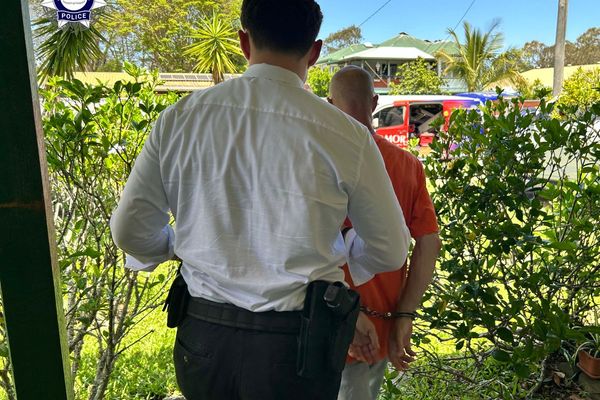Residents of an Ohio town who had been evacuated after a toxic freight train derailment earlier this month are demanding answers from the railway company involved as well as elected officials over health concerns.
The big picture: As emergency crews continue to clean up the site of the Norfolk Southern train derailment in East Palestine, Ohio, lawmakers have drawn attention to the government's oversight of the freight train system. Meanwhile, the Biden administration has promised to hold the rail operator accountable for the wreck and its aftermath.
- The train, which derailed on Feb. 3, was carrying hazardous materials, including at least five tanker cars of vinyl chloride, a colorless but hazardous and carcinogenic gas used to produce PVC plastic and vinyl products.
The latest: Ohio Gov. Mike DeWine (R) said on Feb. 16 he requested additional federal assistance after a phone call with President Biden.
- DeWine said on Feb. 17 the Department of Health and Human Services will help the Ohio Department of Health set up a clinic in East Palestine so that any resident, including those without insurance, may visit a doctor over any health concerns.
- The clinic will be open in the coming days and information on its location and hours will soon be available, DeWine said. There will be local mental health resources available to residents as well.
- Ohio does not currently qualify for disaster assistance from the Federal Emergency Management Agency over the derailment, DeWine said. The agency typically responds to disasters that involve extensive property damage.
- The state filed a request to "preserve our rights" to receive help from the agency if the state becomes eligible, he added.
- "We believe that the railroad should continue to pay, and we're going to insist that they pay," DeWine said. "Whatever damages have been caused, the railroad is responsible for those damages."
Meanwhile, Norfolk Southern said on Feb. 15 it pulled out of a town hall with local, state and federal officials due to concern over the "growing physical threat" to its employees and members of the community, but it did not elaborate on what the threat entailed.
- People at the town hall, which occurred without representatives from the railway company, sought answers for the potential of long-term exposure to chemicals released during and after the derailment and what health dangers residents may face.
Catch up quick: Norfolk Southern officials said some of the cars carrying the vinyl chloride were not breached during the crash but were at risk of exploding, so crews released and burned their contents on Feb. 6, creating a massive smoke plume above the town for several hours.
- Hundreds of people evacuated East Palestine before the release and burn of the vinyl chloride but were allowed to return two days later.
- Some East Palestine residents who have returned have complained of smells, headaches, nausea and other ailments, according to the Washington Post.
- DeWine said on Feb. 14 he authorized the operation of the release and burning of the vinyl chloride at the crash site, saying officials faced two bad options between potentially letting a car containing the material explode or doing the release.
Mechanical issue
A mechanical issue with an axle of one of the 150 cars is believed to be the cause of the derailment of at least 50 of the cars, though the National Transportation Safety Board has not yet made an official determination of the cause.
- Security footage captured in Salem, Ohio — around 20 miles west of East Palestine — before the derailment showed sparks or flames under at least one of the cars on the train, which was transporting goods from Madison, Illinois, to Conway, Pennsylvania.
- At least four other tanker cars involved in the derailment were carrying at least four other different chemicals — ethylene glycol monobutyl ether, ethylhexyl acrylate, isobutylene and butyl acrylate, according to a list sent by Norfolk Southern to the EPA, which released it on Feb. 12.
- In the list, Norfolk Southern said the cars carrying the butyl acrylate and the ethylhexyl acrylate were breached and either all or some of the chemicals were released during the crash.
- It labeled the status of the car carrying ethylene glycol monobutyl ether as "unknown," while it said the isobutylene car was burned but not breached.
What risks the chemicals may pose to humans
Acute exposure to high levels of vinyl chloride, a classified human carcinogen, in the air has been linked to central nervous system effects, while chronic exposure has been shown to cause liver damage, including a rare form of liver cancer, according to the EPA.
- When vinyl chloride burns it decomposes into hydrogen chloride and phosgene, according to the International Programme on Chemical Safety.
- Phosgene is highly poisonous and was used extensively during World War I as a choking agent, while hydrogen chloride is irritating and corrosive to any tissue with which it comes into contact.
Monitoring environmental impact
The Environmental Protection Agency has said it has not detected any "levels of concern" of hazardous substances released during or after the crash, though the agency is continuing to monitor the air throughout East Palestine, including inside at least 210 homes.
- The EPA said it was also investigating soil and surface water contamination near the crash site and had collected spilled material in a nearby stream, Sulphur Run.
- It said Norfolk Southern had installed a dam and water bypass system in the stream to prevent contamination of downstream waters, though it did not say when they were installed.
- In a letter sent to the company on Feb. 10, the EPA said substances released during the incident "were observed and detected in samples from Sulphur Run, Leslie Run, Bull Creek, North Fork Little Beaver Creek, Little Beaver Creek, and the Ohio River" and were also observed entering storm drains.
- DeWine said Wednesday that the water in East Palestine's municipal system is safe to drink based on the Ohio Environmental Protection Agency's results from the latest water tests.
Assessing wildlife impact
The Ohio Department of Natural Resources estimates that 3,500 fish of 12 different species, none of which are endangered, died after the crash across approximately 7.5 miles of streams south of the town, ODNR director Mary Mertz said on Tuesday.
- Mertz added the department does not have evidence of non-aquatic species being affected by chemicals released during or after the derailment.
- Tiffani Kavalec, chief of the Ohio EPA's Division of Surface Water, said the stream Sulphur Run remains polluted but the agency believes the contamination is contained and not moving downstream.
Lawsuits and liability questions
The EPA sent Norfolk Southern a "General Notice of Potential Liability" letter on Feb. 10, in which it said it had determined that the company "may be responsible under [Comprehensive Environmental Response, Compensation and Liability Act] for cleanup of the Site or costs EPA has incurred in cleaning up the Site."
- Connor Spielmaker, a senior communications manager at Norfolk Southern, told Axios on Monday that the company received the EPA’s letter and has "confirmed to them that we have and will continue to perform or finance environmental monitoring and remediation."
- So far, at least four class action lawsuits have been filed against Norfolk Southern over the crash, alleging negligence.
- A spokesperson for Norfolk Southern did not directly respond to Axios' questions on the class-action lawsuits or the status of the car carrying the ethylene glycol monobutyl ether.
- DeWine said Tuesday the train was not considered a "high-hazardous material train" despite the chemicals onboard, meaning Norfolk Southern was not required to notify the state of the contents of the cars. He also called on Congress to review how high-hazardous trains are classified.
Norfolk Southern's response to community
In a press release on Feb. 14, the company said it has donated $1.2 million to around 1,000 families to cover expenses they incurred from their evacuations and was in the process of providing aid to local businesses.
- It said it has so far completed more than 400 in-home air tests with the EPA, which have not "shown any detections of substances related to the incident and does not indicate a health risk."
- The company said on Feb. 13 it has donated $220,000 to the town's fire department to replace breathing apparatuses used by firefighters, $25,000 to the Ohio Red Cross to support a shelter set up at East Palestine High School, and around 100 air purifiers for residents.
Go deeper: Ohio derailment prompts calls to investigate federal oversight of trains
Editor's note: This story has been updated with additional details throughout.







